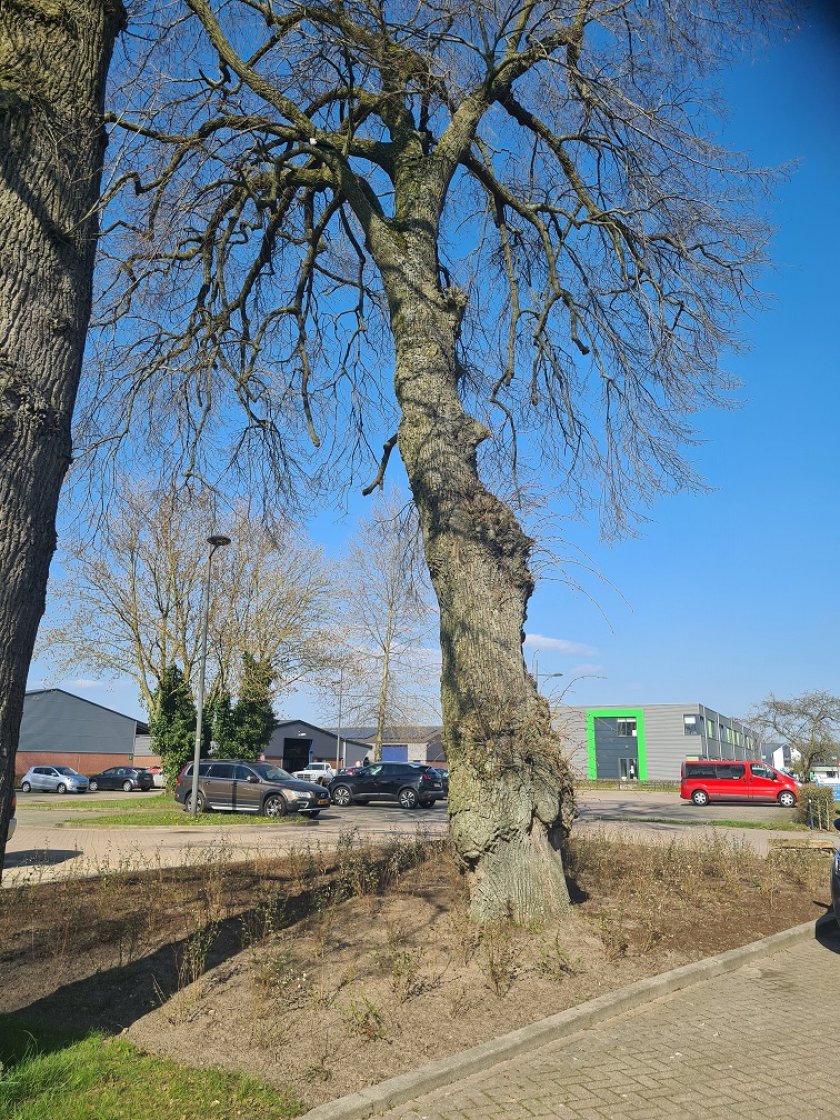
category_news
Update green management Wageningen Campus: tree special
When developing buildings and infrastructure on Wageningen Campus, consideration is also given to the green interpretation of the environment. In the early years, this was mainly inspired by the historic landscape: flowery meadows, hedgerows and avenues. In recent years, experiments have been carried out with various other planting types. Each type requires its own form of management in order to realize the intended functions and development. This post takes a closer look at managing trees.
On Wageningen Campus you will mainly find trees in hedgerows and in rows along roads and ditches. This is characteristic of the historic, linear meadow landscape with coppice groves on which the design of the campus is based. Hundreds of trees have been planted since about 2005 to reinforce the alley and avenue structure. The rows of trees form migration routes for bats and tree-bound species such as squirrel and stone marten.
The majority consists of pedunculate oak (Quercus robur), a strong, long-lived species that was already present in many places on campus. Willow, poplar and birch, which are also characteristic of the area, are no longer planted along roads or parking lots. They are so-called 'self-pruners', trees that drop their branches without showing on the outside that this is going to happen. Willows have been planted in some places, but they are maintained as pollard willows. The branches are used for dead hedges, for example to protect the Dassenbos, or for weaving courses, which Wageningen Student Farm occasionally organizes in the experimental garden, The Field, near Vitae.
Testing new tree species through trial & error
During the development of the campus, dozens of trees were planted in addition to a few solitary trees and small bushes that were already there. Species have been chosen that can, in principle, cope with the growing conditions on the campus: alternately (very) wet and dry with impermeable soil layers here and there. These are situations comparable to an urban environment or climate stress in forests. WUR experts who conduct research in this area, such as Jelle Hiemstra of Wageningen Plant Research (trees and urban greenery) and Leo Goudzwaard and Ute Sass-Klaassen of Forest Ecology and Management (WU Department of Environmental Sciences) have advised on the choice of trees, Leo guided in many cases also the planting.
New trees are given at least 3 seasons to establish. When planting they get soil improver and some extra water if it is very dry, but otherwise they have to fend for themselves. This is how we test which species are suitable for which place. The result ranges from beautifully flowering insect attractors, such as the honey tree, to varieties of native species that are less susceptible to disease and pests, such as the pin oak, fluttering elm, narrow-leaved ash and Turkish hazel.
Blossom and other spring flowers
Slowly but surely, green life on campus is starting to get going again. Cornelian cherry has finished flowering, as have many catkins of willow, alder and hazel. The strip of stinsen bulbs planted last year along the oaks on the Droevendaalsesteeg has been forming a colorful whole for a few weeks now. Blossom of the Juneberry, the sweet cherry, medlar and other fruit trees is starting to sprout. In particular of the 100 apple varieties from the 'timeline of apple production' planted in 2016 by the Center for Genetic Resources (CGN-)Wageningen: wild apples in the landscape garden, a 'modern' orchard on The Field near Vitae and in between two groups with standard trees at the Forum and the amphitheater. You can recognize them by the white signs on the trunk with the CGN number and sometimes a variety name. They receive the same treatment as all other trees on campus, so no fertilizers or pest and disease control, which means that some more vulnerable varieties will eventually disappear.

Monumental trees
At the entrance to Unifarm, there are 6 monumental trees from around 1890. One of them, a linden, deteriorated badly. On the advice of Leo Goudzwaard, the tree's root system has been given more space. To this end, 3 parking spaces at Unifarm have been replaced by a section with flowering shrubs.
Security and trees
Last year, all trees on the WUR grounds were visually checked for their health (VTA). The VTA takes place every 3 years. From this follows advice to prune, monitor or cut down trees. Trees are felled or uprooted only when the falling of a tree can lead to damage or injury. Depending on the location, WUR will apply for a felling permit from the municipality or province. In principle, work on the trees takes place outside the breeding season, but even then the gardener always checks whether he is not disturbing any nests. You may still see the arborists at work this spring, otherwise it will be this fall.
A felling permit is usually issued with an obligation to replant. If it is not possible or useful to plant a similar tree in approximately the same place, we compensate for this in another way. For example, by replacing grass in the slipstream of infrastructural work with a varied planting of herbs, shrubs and trees. In this way, 10 new trees have been included in the planting of the strip along the new cycle path, near the amphitheater. We also use trees that have to be removed in one place in another place. For example, oaks that had to make way for the expansion of the research facilities at Axis were transferred two weeks ago to the Leeuwenborch, where 14 poplars and willows fell in the spring storms last year.
Green management
Green management consists of the green maintenance contract manager and the park manager of Facilities and Services who, together with the WUR Green Committee and a network of (WUR) experts, give substance to the Green Vision Wageningen Campus.
